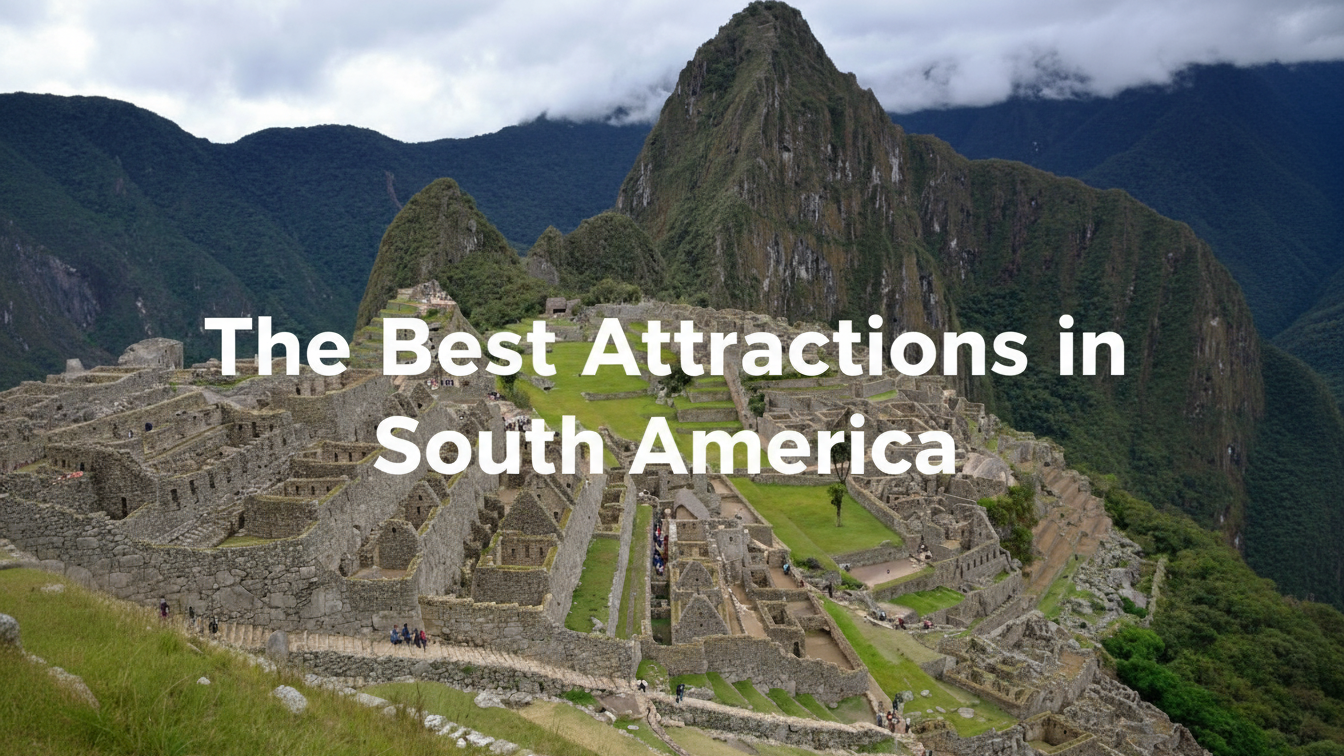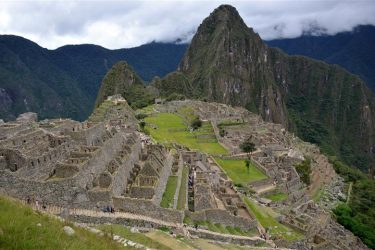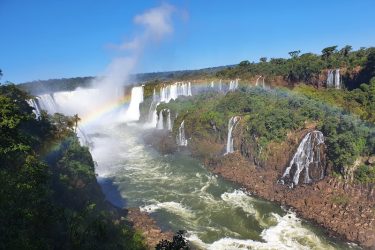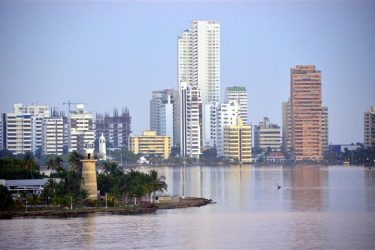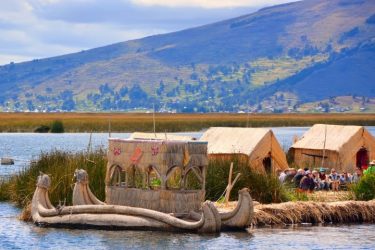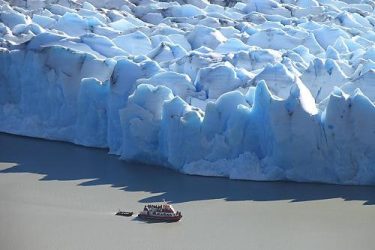The continent of South America is home to breath taking landscapes, a wide range of cultures, and incredible experiences. For every kind of traveler, there is something to experience, from the Andes’ snow-capped peaks to the lush Amazon rainforest. Rio de Janeiro, Lima, and Buenos Aires are three vivacious cities that are rich in culture, history, and delectable cuisine. The breath taking beaches of Brazil, Uruguay, and Colombia are ideal for leisure and exploration, while the Galapagos Islands present a rare chance to observe uncommon wildlife in its natural habitat.
Travelers can discover the thriving street art scene in Valparaso, Chile, or one of the Seven Wonders of the World, Machu Picchu, in South America. They can even go on a walk across Patagonia, a continent of glaciers. Uyuni, Bolivia’s salt flats, are a beautiful sight, while Cartagena, Colombia’s vibrant architecture, is a photographer’s paradise.
When one travels to South America, they immerse themselves in the colorful culture and extensive history of the region, sample local cuisine, and take in the stunning scenery that will stay with them forever. In this article, we will give you what we feel are the biggest tourist attractions in South America.
Machu Picchu, Peru
In the Andes Mountains of Peru, there lies a well-known Inca archaeological site called Machu Picchu. The well-preserved remains, breath taking vistas, and historical significance of this UNESCO World Heritage Site are well-known. For many tourists, seeing Machu Picchu, one of South America’s most famous locations, is an experience of a lifetime.
Visitors can take a train from Cusco to Aguas Calientes, the town nearest to the ruins, to get to Machu Picchu. They can either walk up to the site from there or take a shuttle bus. Visitors can tour the historic temples, terraced farms, and settlements at Machu Picchu. The nearby Andes Mountains may be seen in stunning detail from the location.
It is significant to note that Machu Picchu can get crowded during peak season due to its popularity, so reservations in advance are advised. Along with acclimatizing to the high altitude, visitors should pack the right equipment for hiking and site exploration.
Overall, Machu Picchu offers a special look into the pre-Inca culture and is a must-see for history and nature lovers.
Christ the Redeemer, Brazil
A famous statue of Jesus Christ called Christ the Redeemer stands watch over Rio de Janeiro, Brazil. Millions of people visit this monument every year, making it one of the most well-known and recognizable sites in the entire globe. It is situated at the roughly 700-meter-high Corcovado Mountain’s summit.
By train, van, or by ascending to the mountain on foot, visitors can get to the statue. When they arrive, visitors may take in the spectacular panoramas of the city and the mountains in the distance. Made of reinforced concrete and soapstone, the statue is an astonishing 30 meters tall.
Christ the Redeemer is a significant cultural and historical landmark in addition to being a religious icon. It is regarded as one of the Seven Wonders of the Modern World and has been designated a UNESCO World Heritage site. Without witnessing Christ the Redeemer’s majestic presence, a trip to Rio de Janeiro would be incomplete.
Iguazu Falls, Argentina and Brazil
Iguazu Falls, one of the most spectacular natural wonders in the world, is situated on the border between Argentina and Brazil. Iguazu Falls is a must-visit location for every nature enthusiast, including over 275 separate waterfalls covering approximately 2 miles.
Both the Argentinean and Brazilian sides of the falls are accessible to visitors, and each provides a distinctive viewpoint. On the Argentinean side, you can get a close-up look of the falls and stroll through them on one of the many paths and trails while feeling the mist on your face. In contrast, the Brazilian side of the falls provides a panoramic picture that enables visitors to fully appreciate the size and force of the flowing waterfalls.
Along with viewing the falls, tourists can engage in other nearby activities like birdwatching, hiking, and kayaking. Numerous species of fauna, including toucans, coatis, and monkeys, call the nearby rainforest home.
Iguazu Falls is a breath taking location that provides visitors wishing to connect with nature a unique experience.
Galapagos Islands, Ecuador
Off the coast of Ecuador, there is an archipelago of volcanic islands known as the Galapagos. These islands have been listed as a UNESCO World Heritage Site in recognition of their distinctive wildlife. The Galapagos Islands are home to a wide range of creatures, such as giant tortoises, marine iguanas, blue-footed boobies, and penguins. Visitors can explore both the land and the sea via hiking, snorkeling, and scuba diving on the islands.
To conserve the delicate environment, travelers to the Galapagos Islands must follow stringent rules and travel with authorized guides. There are many different tour choices, from day outings to multi-day adventures. Even excursions to neighboring islands like Isabela and San Cristobal are included of some tours.
For both nature lovers and explorers, the Galapagos Islands provide a genuinely exceptional and unforgettable experience.
Amazon Rainforest, Brazil, Peru, and Ecuador
The Amazon Rainforest is one of the biodiverse places in the world and a well-liked vacation spot for outdoor enthusiasts. Hiking routes, canopy tours, and boat rides on the Amazon River are just a few of the alternatives available for tourists to discover the region’s diverse flora and fauna.
Visits to indigenous villages to learn about their way of life and culture are among the most popular activities. It’s a chance to interact with the environment and the locals, who are acutely aware of the value of the rainforest to the globe.
Jaguars, monkeys, sloths, and thousands of different bird species are just a few of the amazing animals that call the Amazon Rainforest home. Visitors can join professional naturalists on guided tours to help them spot and identify various species.
The Amazon Rainforest faces numerous difficulties, including deforestation, climate change, and environmental deterioration. By practicing responsible tourism, tourists can reduce their impact on the ecosystem’s fragility.
Uyuni Salt Flats, Bolivia
Anyone visiting South America should be sure to stop at the Uyuni Salt Flats in Bolivia. With a surface area of more than 10,000 square kilometers, this extraordinary environment is the world’s largest salt flat. Take a tour of the flats to see the vivid mineral deposits and unusual rock formations, as well as the alien landscape.
Watching the sun set over the enormous stretch of salt is one of the joys of a trip to the Uyuni Salt Flats. The sky changes color as the sun sets, making for a beautiful backdrop for photographs. The pink flamingos that live in the neighboring lagoons are just one of the unusual creatures and plants that can be found on the salt flats.
Tourists can also discover the history and cultural significance of the Uyuni Salt Flats while they are there. Since ancient times, salt has been mined in the flats, and the nearby villages still use the salt for a number of uses. Overall, visiting the Uyuni Salt Flats is a journey you will not soon forget.
Cartagena, Colombia
On Colombia’s Caribbean coast, Cartagena is a stunning seaside city. It is renowned for its vibrant culture, extensive history, and beautiful colonial architecture. Since the 16th century, Cartagena has been kept in a way that makes visiting it feel like travelling back in time.
Visits to Cartagena must include a tour of the historic town. You will be transported back in time by the colorful colonial structures, winding cobblestone streets, and lively plazas. To learn about the history of the city and to take in breath-taking vistas of it, make sure to visit the Castillo de San Felipe de Barajas, a UNESCO World Heritage Site.
Beautiful beaches like Playa Blanca and Bocagrande may be found in Cartagena. Enjoy a leisurely stroll down the beach, some time in the sun, or a water sport like jet skiing or snorkeling.
Cartagena’s nightlife is vibrant and varied, with lots of pubs, clubs, and eateries. Taste the regional food, groove and salsa music, or simply relax with a drink while admiring the stunning Caribbean Sea.
Take a trip by boat to the adjacent Islas del Rosario, an archipelago of islands renowned for its coral reefs and pristine waters.
Lake Titicaca, Peru and Bolivia
One of the biggest high-altitude lakes in the world is Lake Titicaca, which is situated on the border between Bolivia and Peru. In addition to being a stunning natural beauty, it serves as a center of culture for the Andean people who live nearby. The lake can be explored by boat cruises, which offer breath taking views of the surrounding mountains and the lake’s crystalline blue waters. Many boat cruises make a stop at the Uros Islands, which are reed-only floating islands where tourists can learn about the natives’ traditional way of life.
The town of Puno, which is well-known for its bustling festivals and thriving music culture, is located on the Peruvian side of the lake and is open to tourists. The city is also home to a number of fascinating museums, including the Carlos Dreyer Museum, which highlights the area’s rich cultural history. Visitors can also climb to the Inca remains of Sillustani, a pre-Columbian cemetery with impressive stone pillars and stunning lake views. Anyone visiting Bolivia or Peru should be sure to stop at Lake Titicaca, which offers a distinctive cultural and ecological experience.
Patagonia, Chile and Argentina
Argentina and Chile both share the southernmost part of South America, known as Patagonia. Nature lovers and adventure seekers must explore this beautiful and rugged area. Patagonia is renowned for its unspoiled wildness, soaring mountains, enormous glaciers, turquoise lakes, and enormous tracts of grasslands. It offers a variety of activities, including horseback riding, kayaking, and hiking and trekking.
The Los Glaciares National Park, one of Patagonia’s most well-known tourist destinations, is home to the famous Perito Moreno Glacier, a sizable glacier that is perpetually moving and rupturing, producing a breath taking show of ice and sound. Other well-liked locations in Patagonia include the Argentine side of the region, which is renowned for its breath taking views of the Andes Mountains, clear lakes, and charming villages, and the Torres del Paine National Park in Chile, which is renowned for its stunning mountain scenery and abundant wildlife.
Overall, Patagonia is a singular and gorgeous location that is ideal for anyone looking for adventure and unspoiled nature.
Atacama Desert, Chile
One of the most extraordinary and bizarre places on earth is the Atacama Desert. It is thought to be the driest non-polar desert in the world and is situated in northern Chile. Its arid landscapes, salt flats, hot springs, geysers, and vibrant rock formations distinguish it. Visitors have the opportunity to experience a variety of natural wonders in the area, including as the Moon Valley, the Atacama Salt Flat, and the Tatio Geysers.
Stargazing is one of the joys of a trip to the Atacama Desert. It is regarded as one of the best locations in the world for stargazing due to its high altitude and clear skies. Visitors can join guided tours to use telescopes to explore the stars and planets while learning about the constellations and the cosmos.
Along with the natural beauty, the area has a number of tiny villages where tourists can discover the history and culture of the area. Traditional crafts and mouth-watering regional cuisine are available in some of the towns. Overall, for nature lovers and adventure seekers alike, travelling to the Atacama Desert is a singular and unforgettable experience.
In conclusion, South America is a really distinctive and varied continent that presents travelers with a variety of must-see sights. South America has something for every kind of traveler, from historic sites and breath taking natural wonders to bustling cities and distinctive cultures.




